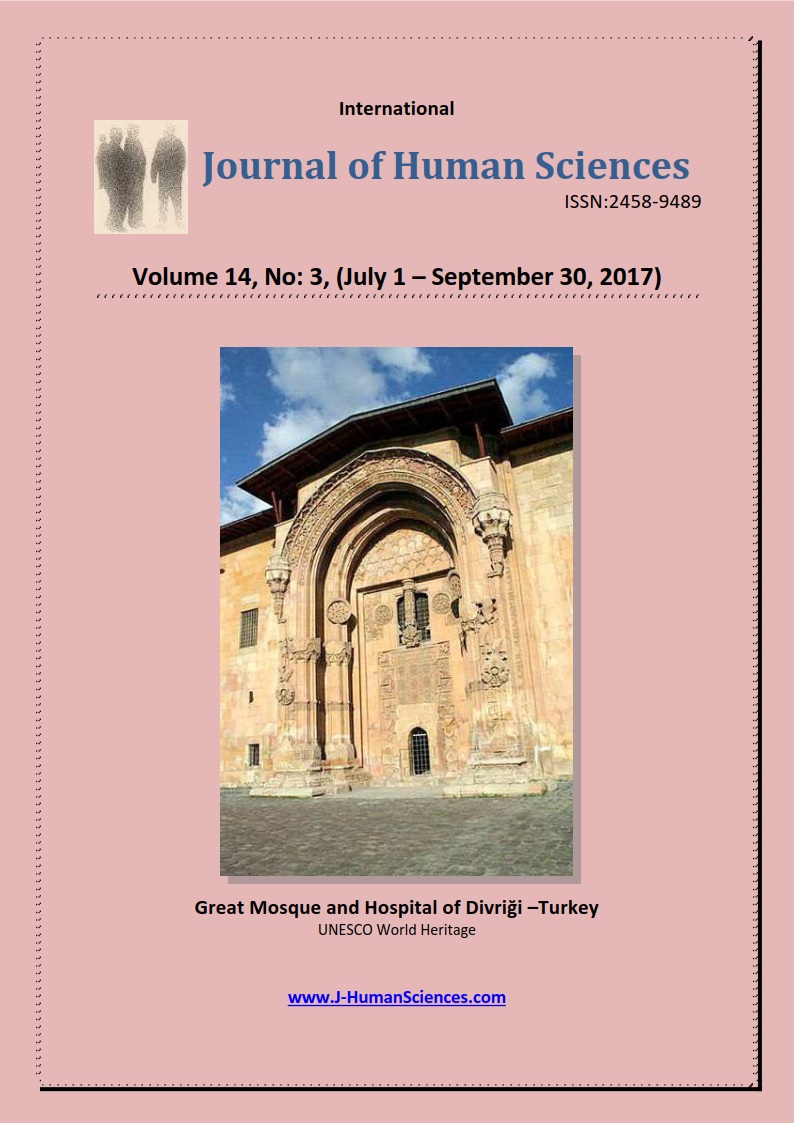Determining the opinions of physical education teacher candidates about using concept cartoons in education
Keywords:
Volleyball, Cartoon, Physical Education Teacher Candidates, Physical EducationAbstract
In this study, which emphasizes on the importance of using concept cartoons in education, the opinions of physical education teacher candidates about volleyball including in the program of physical education were detected through concept cartoons. This study which is a qualitative research, was conducted with the participation of 60 physical education teacher candidates studying in the 4th year in the Physical Education and Sports High School in Adıyaman University. As data collecting tool, a form including in a cartoon about volleyball and 6 open-ended questions about this concept cartoon in the study was used. The question form used was performed to determine the opinions of physical education teacher candidates about using cartoons in education. These data were studied through content analysis. At the result of the study, it was concluded that the opinions of physical education teacher candidates about concept cartoons used in education are positive and concept cartoons influence learning in a positive way and provide motivation and academic success in lessons.
Downloads
Metrics
References
Akkaya, A. (2011). Karikatürlerle dil bilgisi öğretimi, Yayınlanmış Doktora Tezi. Selçuk Üniversitesi, Eğitim Bilimleri Enstitüsü, Konya.
Akkaya, A. (2012). Öğretmen adaylarının konuşma sorunlarına ilişkin görüşleri, Mustafa Kemal University Journal of Social Sciences Institute, Year: 2012, Volume: 9, Issue: 20, s. 405-420
Aksoy, B., Karatekin, K., Kuş, Z. & Sönmez, Ö.F. (2010). Sosyal bilgiler öğretiminde karikatür kullanımının öğrencilerin akademik başarısına etkisi. Newwsa, 5(4), 1484-1497.
Büyüköztürk, Ş. (2009). Bilimsel Araştırma Yöntemleri. Ankara: Pegem A Yayıncılık.
Birisci, S., Metin, M. & Karakaş, M. (2010). Pre-Service Elementary Teachers’ Views on Concept Cartoons: A Sample from Turkey. Middle-East Journal of Scientific Research 5 (2): 91-97. URL: http://www.idosi.org/mejsr/mejsr5%282%29/7.pdf
Cengizhan, S. (2011). Modüler Öğretim Tasarımıyla Entegre Edilmiş Kavram Karikatürleri Hakkında Öğretmen Adaylarının Görüşleri. Eğitim ve Bilim, 36 (160).
Christine, C., & Lay-Yen, T. (2010). Using concept cartoon, pupils' drawings, and group discussions to tackle children's ideas about biological inheritance, Journal of Biological Education, 44:3, http://dx.doi.org/10.1080108-115, /00219266.2010.9656206.
Ekici, F., Ekici, E., & Aydın, F. (2007). Utility of Concept Cartoons in Diagnosing and Overcoming Misconceptions Related to Photosynthesis. International of Journal of Environmental & Science Education, 2(4), 111-124.
Ersoy, A. F. & Türkkan, B. (2010). İlköğretim öğrencilerinin çizdikleri karikatürlere yansıttıkları sosyal ve çevresel sorunların incelenmesi. Eğitim ve Bilim. 35(156), 96-109.
Flynt, E., S.,& Brozo. W. (2010). Visual Literacy and the Content Classroom: A Question of Now, Not When. The Reading Teacher, 63(6), 526–528 DOI:10.1598/RT.63.6.11
Jones, M. G., & Brader-Araje, L. (2002). The Impact of Constructivism on Education: Language, Discourse, and Meaning. American Communication Journal, 5(3).
Kabapınar, F. (2005). Effectiveness of Teaching via Concept Cartoons from the Point of View of Constructivist Approach. Kuram ve Uygulamada Eğitim Bilimleri. 5 (1).
Kabapınar, F. (2007). Fen Öğretiminde Kavram Karikatürleri: Oluşturmacı Bir Öğretim Yöntemi, A.Oktay and Ö.P. Unutkan (Ed.) İlköğretim Çağına Genel Bir Bakış (ss.243-264). İstanbul: Morpa Kültür Yayınları
Keogh, B., Naylor, S. & Wilson, C. (1998). Concept cartoons: a new perspective on physics education. Physics Education, 33 (4), 219-224.
Keogh, B., & Naylor, S. (2000). Teaching and Learning in Science Using Concept Cartoons: Why Dennis Wants to Stay in at Playtime. Investigating: Australian Primary and Junior Science Journal, 16(3), 10-14.
Keogh, B. & Naylor, S. & de Boo, M. & Feasey, R. (2001). (Ed: B, Helgard) Research in Science Education- Past, Present and Future, Formative Assesment Using Concept Cartoons: İnitial Teacher Training in The UK. Hingham, USA: Kluwer Academic Publishers.
Long, S. & Marson, K. (2003). Concept cartoons. Hands on Science, 19(3), 22-24.
Martinez, Y. M. (2004). Does The K-W-L Reading Strategy Enhance Student Understanding in Honors High School Science Classroom?. (Unpublished masters thesis). Fullerton: California State University
Morris, M., Merritt, M., Fairclough, S., Birrell, N. & Howitt, C. (2007). Trialing concept cartoons in early childhood teaching and learning of science. The Journal of the Australian Science Teachers Association, 53 (2), 42-45.
Oruç, Ş. (2010). Sosyal bilgiler öğretiminde mizah kullanımının öğrencilerin akademik başarılarına ve tutumlarına etkisi. Mehmet Akif Ersoy Üniversitesi Sosyal Bilimler Enstitüsü Dergisi.2 (3).
Ören, F. Ş., & Meriç, G. (2014). Seventh Grade Students’ Perceptions of Using Concept Cartoons in Science and Technology Course. International Journal of Education in Mathematics, Science and Technology, 2(2). 116-136.
Özel, E., Bayındır, N., Gökçe, M., Özel, A. (2014). Öğretmen adaylarının karikatürlerle eğitim sorunlarını algılama düzeyleri. International Periodical for the Languages, Literature and History of Turkish or Turkic. 9(3), 1085-1092.
Özer, A.,2004. Karikatür ve Eğitim. Bilim ve Aklın Aydınlığında Eğitim Dergisi, 84, 19-25.
Roesky, H.W. & Kennepohl, D. (2008). Drawing attention with chemistry cartoons. Chemistry for Everyone, 85 (10), 1355-1360.
Seçgin, G., Yalvaç, G. & Çetin, T. (2010). İlköğretim 8. sınıf öğrencilerinin karikatürler aracılığıyla çevre sorunlarına ilişkin algıları. International Conference on New Trends in Education and Their Implications. 391-39
Stephenson, P. &Warwick, P. (2002). Using soncept caroons to progression in students’ understanding of light. Physics Education, 37 (2), 135-141.
Yıldırım, A. & Şimşek, H. (2013). Sosyal Bilimlerde Nitel Araştırma Yöntemleri.Ankara: Seçkin Yayıncılık.
Downloads
Additional Files
Published
How to Cite
Issue
Section
License
Authors can retain copyright, while granting the journal right of first publication. Alternatively, authors can transfer copyright to the journal, which then permits authors non-commercial use of the work, including the right to place it in an open access archive. In addition, Creative Commons can be consulted for flexible copyright licenses.
©1999 Creative Commons Attribution-ShareAlike 4.0 International License.


